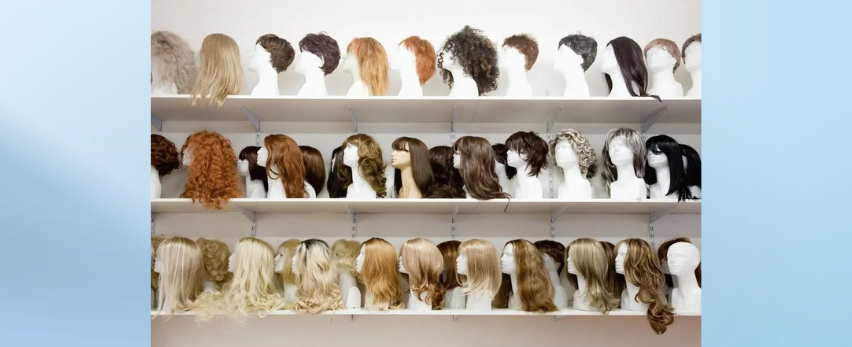
What is the lifespan of a high-quality wig?
For those who want to address balding or change their hairstyle, wigs are a popular accessory. However, a number of factors, such as the type of material, frequency of wear, and support schedule, can affect how long a wig lasts. The factors that affect wigs lifespan will be examined in this article, along with suggestions for extending it.
Introducing to Top notch Wigs
High-quality wigs are made from high-quality materials and are designed to mimic the texture and appearance of natural hair. These wigs provide durability, comfort, and styling versatility, regardless of whether they are made from synthetic hair, human hair, or a combination of the two. Knowing how to take care and maintain your wig is essential to extending its lifespan and maintaining its appearance.
Factors Affecting Wigs' Life
- A Type of Wig Material
The type of material used to make a wig has a significant impact on how long it lasts. Due to their inherent durability and ability to withstand heat styling and substance medications, human hair wigs will typically last longer than synthetic wigs. engineered wigs may have a shorter lifespan and need to be handled carefully to prevent damage.
- Wear Recurrence
The more frequently you wear your wig, the more quickly it may degrade. Regular exercises, brushing, and styling can all contribute to mileage, which eventually causes the wig filaments to become frayed or tangled. It can help to postpone their life expectancy to switch between multiple wigs and allow everyone to rest in between wears.
- Support and Care
Maintaining the lifespan of your wig requires genuine care and support. Regular cleaning, molding, and styling are essential to maintaining the wig's best appearance and guarding against damage from environmental elements like moisture and sunlight. Following the manufacturer's instructions and using specific wig care products will help maintain the wig's integrity and quality.
Expected Life Expectancy of Different Types of Wigs
- Human Hair Wigs
With proper care and maintenance, high-quality human hair wigs can last anywhere from one to three years or more. Human hair wigs can be styled, shaded, and treated just like real hair, giving them the most realistic appearance. Human hair wigs can retain their essentialness and brilliance for a long time with proper maintenance.
- Manufactured Wigs
Compared to human hair wigs, manufactured wigs typically have a shorter lifespan, ranging from six months to a year, depending on usage and maintenance. Even though engineered wigs are more affordable and require less maintenance, if they are not properly cared for, they may be prone to tangle, frizz, and heat damage.
- Mixed Wigs
Mixed wigs, which combine synthetic and human hair, provide a balance between toughness and reasonableness. When properly cared for, these wigs can last one to two years while providing a distinctive look and styling versatility.
Indications That a Wig Needs to Be Replaced
It is essential to know when to trade your wig in order to maintain your comfort and appearance. Indications that a wig may need to be replaced include:
Uncomfortable tangling or shedding
Visible wear and tear, such as deteriorating patches or frayed closures
Surface or appearance alterations, such as bluntness or decreased adaptability
In order to ensure that you generally feel and look your best, it may be the perfect time to invest in another wig if you observe any of these symptoms.
Strategies for Increasing Your Wig's Life Expectancy
- Appropriate Capacity
To help maintain its shape and prevent tangling, store your wig when not in use on a wig stand or life-sized model head. Avoid keeping the wig near warm sources or in direct sunlight as this can damage the wig filaments.
- Standard Cleaning and Assistance
Regular cleaning will remove oil, dirt, and the buildup of styling items from your wig. Avoid washing the wig too frequently to avoid depleting the strands of their natural oils, and use a gentle cleanser and conditioner designed specifically for wigs.
- Preventing Intensity Styling tool
Level irons, hair curlers, and blow dryers are examples of high-intensity styling tools that should not be used on engineered wigs because they can dissolve or damage the filaments. Using low-intensity settings and protecting the wig with an intensity-safe shower are essential when styling.
- Allocating Resources to Quality
Investing in a high-quality wig from a reliable manufacturer or retailer is essential to ensuring longevity and performance. Even though high-quality wigs may cost more up front, they provide common strength, comfort, and styling options, which enhance your confidence and appearance.
